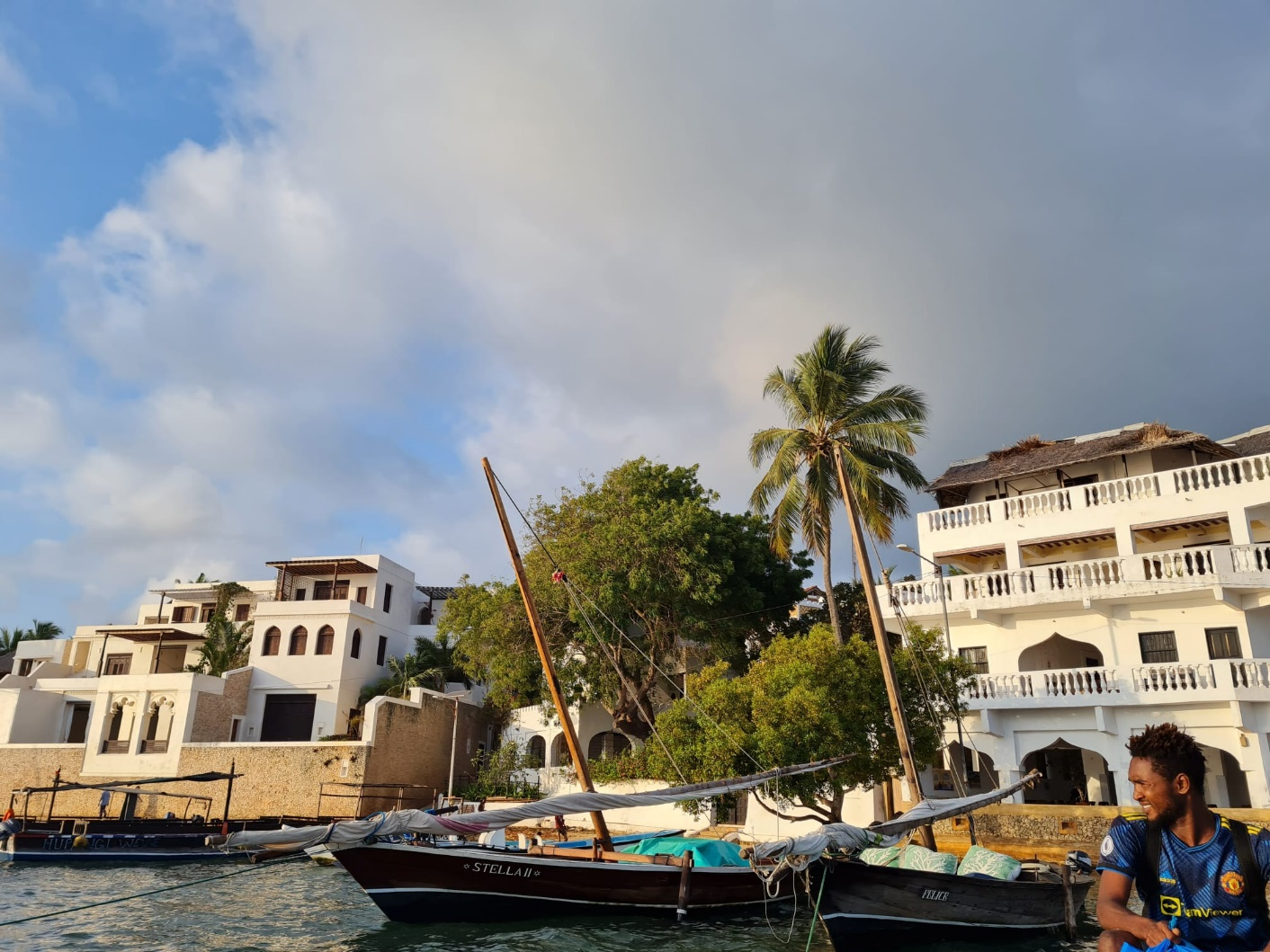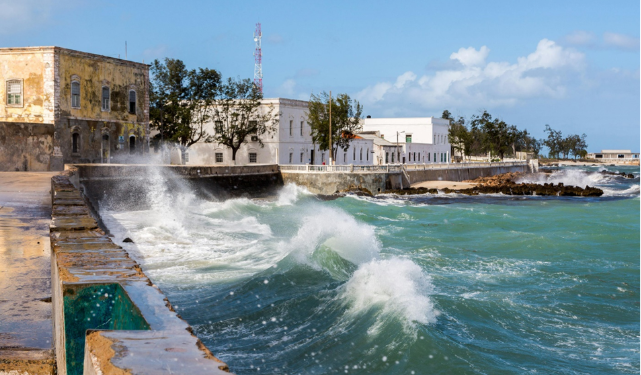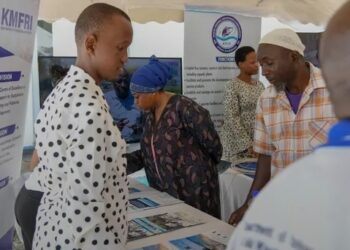Climate Change and Its Impact on Swahili Coast Heritage Sites – The Swahili Coast, stretching from Kenya, Tanzania, and northern Mozambique to the Comoros archipelago, has long been a meeting point for African, Arab, Indian, and European cultures. Its rich heritage is reflected in historic stone towns, merchant houses, and centuries-old architectural traditions. However, climate change now threatens both the structural integrity of these sites and the communities that preserve them.
The Threat of Rising Seas and Coastal Erosion
The Swahili coastal region, including three UNESCO World Heritage Sites—Lamu Old Town (Kenya), Fort Jesus (Mombasa, Kenya), and the Island of Mozambique—is facing increasing risks from rising sea levels and coastal erosion. In Lamu Old Town, one of the oldest and best-preserved Swahili settlements, the encroaching sea and intensifying rainfall are accelerating the deterioration of its historic coral stone structures. Additionally, traditional macuti (palm-leaf) roofing materials are becoming scarcer, making it harder to maintain vernacular building traditions.
Further south in Mombasa, Fort Jesus, a 16th-century Portuguese fortress that stands as a symbol of the region’s colonial history, is under threat from coastal erosion and salt-laden winds, which weaken its historic walls. The deterioration has already forced the closure of sections of the fort, raising concerns about its long-term preservation. Similarly, on the Island of Mozambique, the architectural grandeur of Stone Town and the vernacular settlements of Macuti Town face climate-induced pressures. Traditional houses are rapidly being replaced by concrete block structures with metal roofing, reflecting how environmental and economic changes are reshaping local heritage.
Extreme Weather and Changing Rainfall Patterns
The Swahili Coast is also witnessing more frequent and intense storms, causing storm surges and destructive flooding that erode foundations, weaken structural integrity, and increase salt infiltration in historic walls. Heavy rainfall, coupled with inadequate drainage systems, leads to water stagnation, which accelerates moisture damage in coral stone buildings. These climatic shifts exacerbate the loss of traditional resource management systems, which had long helped Swahili communities adapt to environmental fluctuations.
Loss of Traditional Building Materials and Practices
One of the greatest challenges posed by climate change is the disappearance of traditional materials and building techniques, which have historically been well-adapted to local environmental conditions. Traditional Swahili architecture relies on locally sourced coral stone, mangrove timber, and macuti roofing, materials that provide natural ventilation, insulation, and resilience against humid coastal climates. However, rising sea levels, deforestation, and shifting economic priorities are making these materials increasingly difficult to obtain. As a result, modern construction materials, such as concrete and metal roofing, are becoming more widespread, altering the cultural landscape and reducing the long-term climate adaptability of historic settlements.

Adapting Traditional Knowledge for Climate Resilience
Despite these challenges, there is an opportunity to revitalize and adapt traditional Swahili building techniques to reinforce climate resilience. The time-tested construction methods of coral stone walls, elevated foundations, and natural ventilation designs have historically allowed communities to withstand environmental shifts over centuries. The path forward depends on supporting local communities—the primary custodians of Swahili heritage—in integrating traditional materials and techniques with modern conservation strategies.
In parallel, it is essential to equip local stakeholders—primarily fishermen and traders—with the knowledge and skills needed to improve their income and entrepreneurial capacity. A more dynamic and productive economy will lead to greater investment in home maintenance and improvements, which, when guided by a heritage-conscious approach, can help preserve the cultural and architectural integrity of villages. This, in turn, will enhance both the comfort and liveability of traditional structures, ensuring that economic growth supports the long-term sustainability of local heritage.

Investments in community-driven conservation, heritage education, and sustainable building practices could offer solutions that preserve cultural heritage while enhancing climate resilience. Regional and international initiatives, including the 2025 World Monuments Watch, aim to strengthen both the physical resilience and the social fabric of Swahili coastal communities, ensuring that these invaluable heritage sites are not only protected but also remain living cultural landscapes for generations to come.
Climate Change and Its Impact on Swahili Coast Heritage Sites







